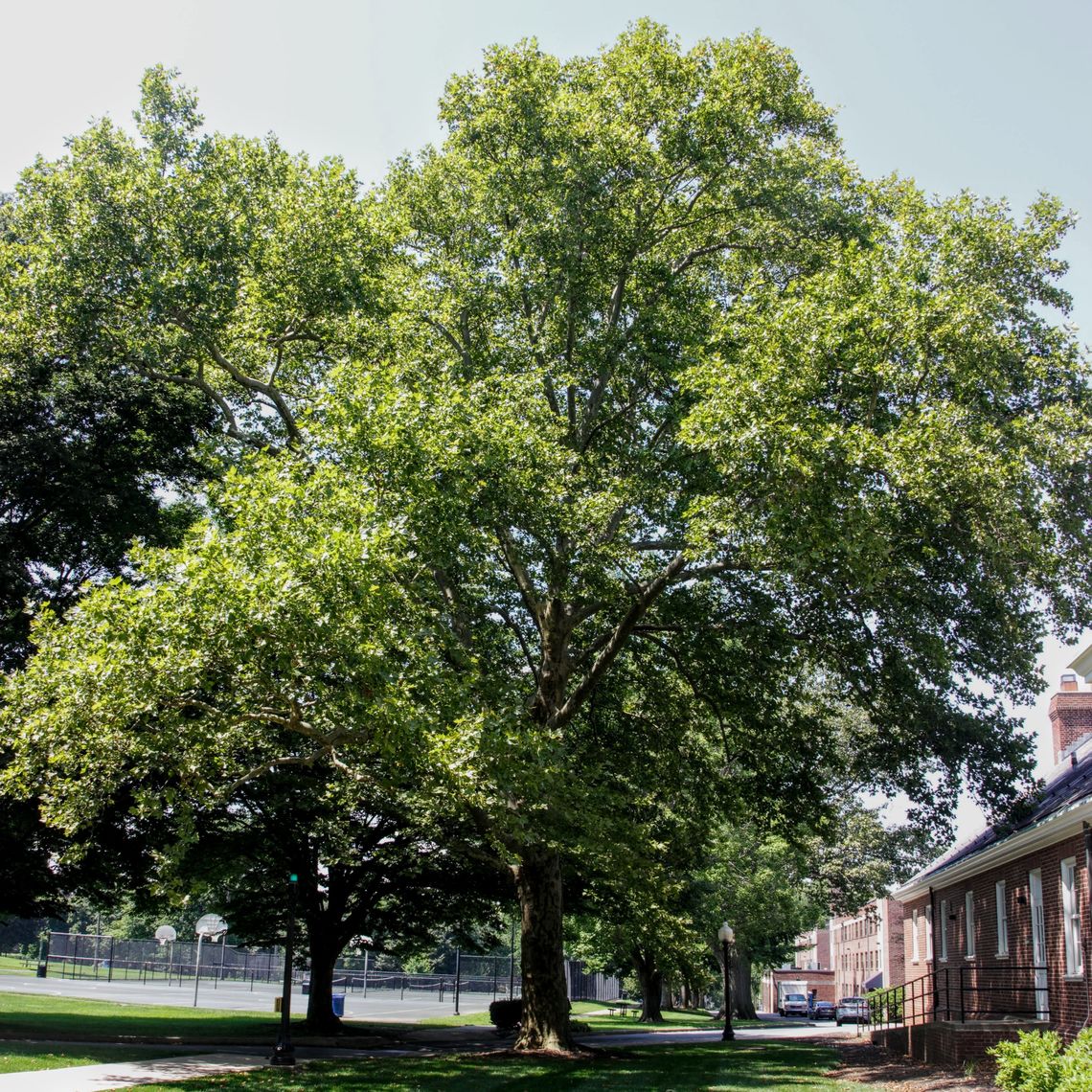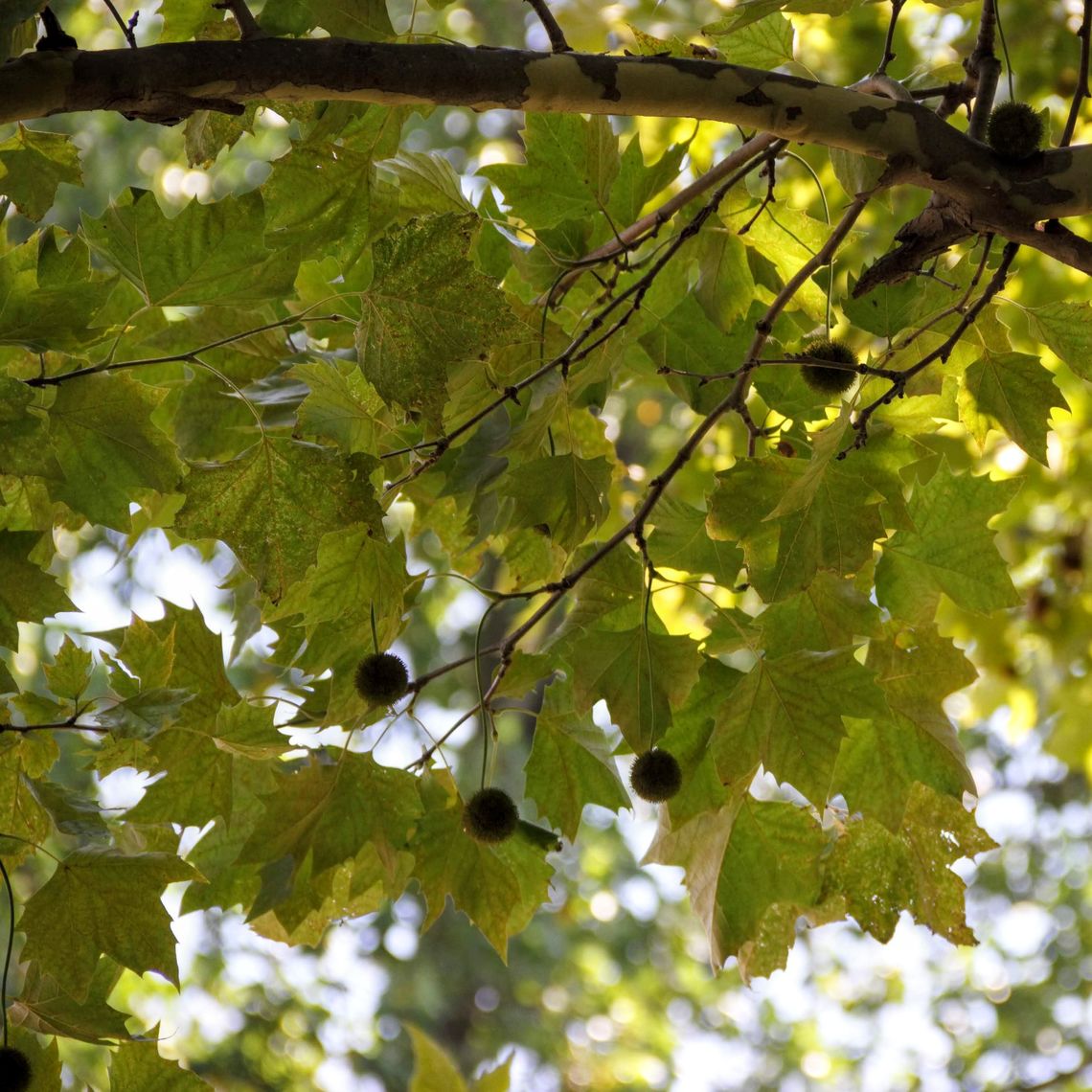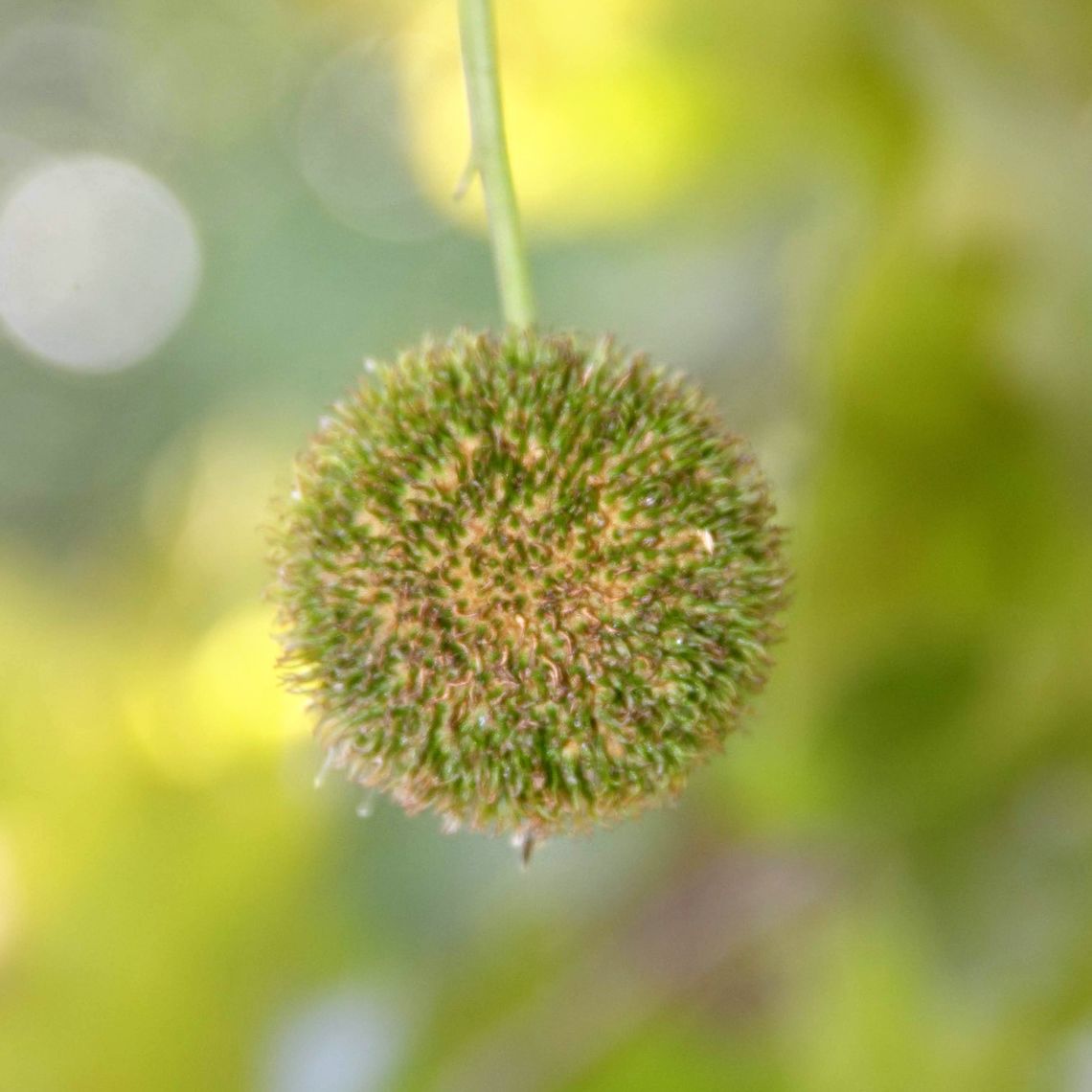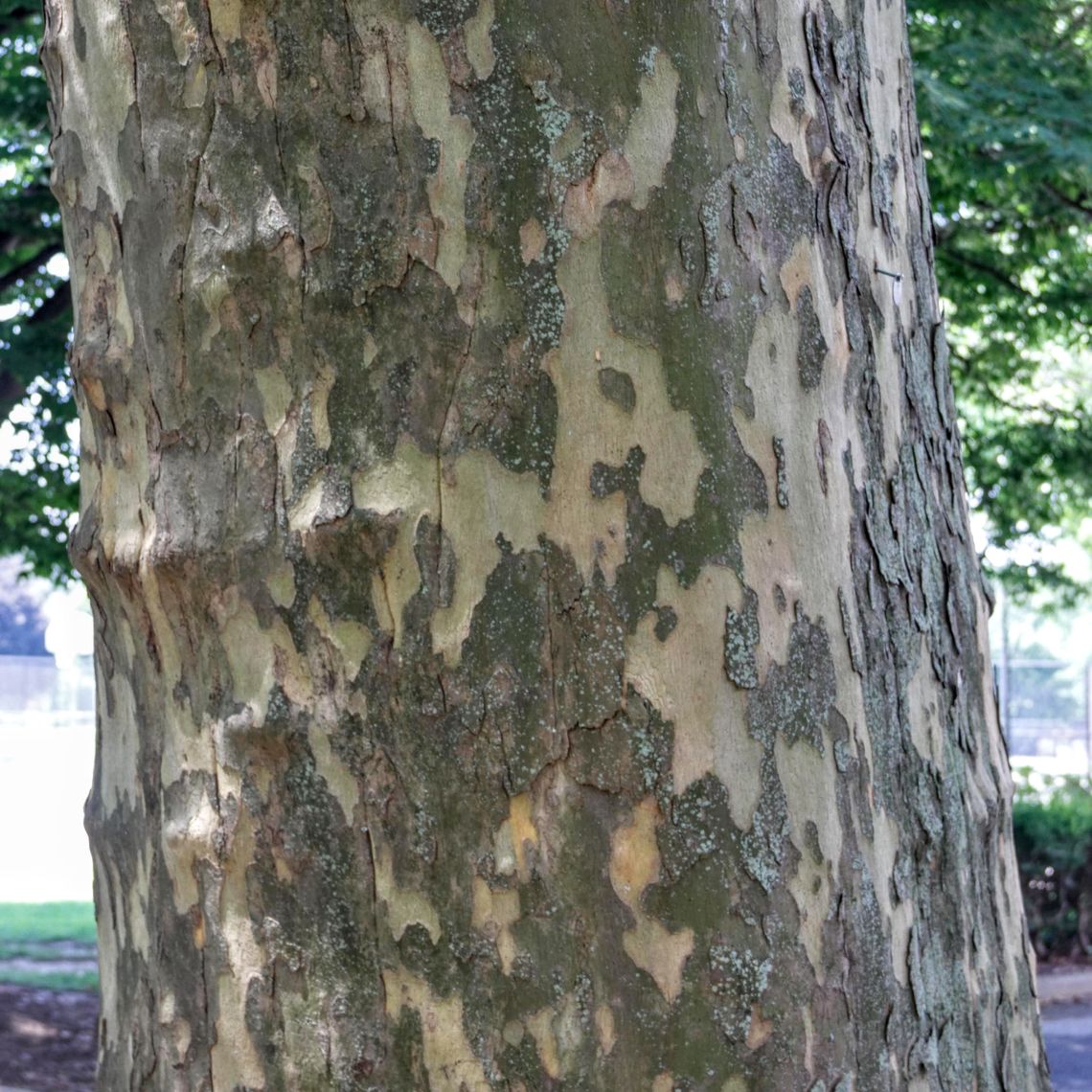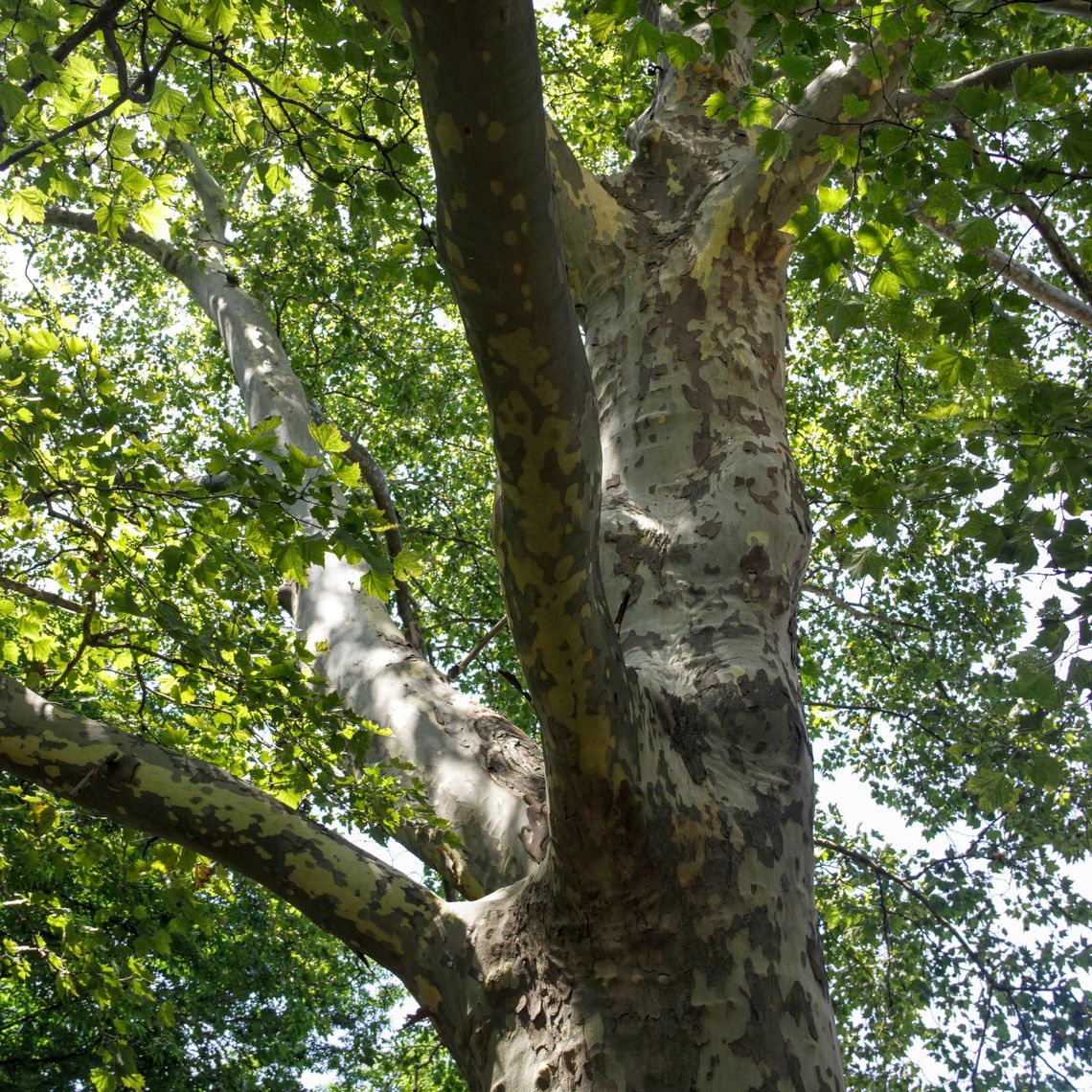London Plane Tree (Plantus x acerifolia)
The London planetree is a hybrid of Plantus orientalis (Asian Planetree) and Plantus occidentalis (American Sycamore). This cross may have occurred as early as 1640 and from that point, the tree was extensively planted in London. This tree has now become popular worldwide, and may be one of the most commonly planted shade tree. The London planetree is often hard to distinguish from the American sycamore, though its most distinguishing feature is that its fruits appear in pairs. Like the American sycamore, this tree has exfoliating bark that reveals the creamy white inner bark. This tree attracts insect pollinators, birds, and small mammals.
Family: Platanaceae (Planetree/ Sycamore)
Characteristics: The 6-inch to 7-inch-long leaves are, broadly toothed, dark green, and have 3-5 lobes. In the fall, leaves turn yellow-brown. In April, small flowers appear in rounded clusters. Male flowers are yellow, female flowers are red. The female flowers give way to spherical fruits which are brown, fuzzy, and appear in pairs. Each fruit holds numerous seeds. Bark is olive colored and exfoliates, revealing the creamy white inner bark. When young, this tree has a tight pyramidal shape and becomes rounded with age. This tree has wide spreading branches. It grows 70-100 feet high and 65-80 feet wide.
Foliage: Deciduous (leaves lost seasonally)
Geographic Origin: Europe (non-native)
Cultivation Notes: Requires high maintenance. Does best in full sun, though can tolerate light shade. Prefers medium to wet and well-drained soils, though is very tolerant of all soil types. This tree is also generally tolerant of air pollution.
Number on Campus: 48
Sources: Dirr, Morton Arboretum, Missouri Botanical Garden

